Basic Chair of
Dynamical Systems
|
|
|
Basic Chair of Dynamical Systems |
|
The Main Objectives of the Chair.
Realization of these objectives is ensured by means of the following principles of organization of the educational process.
|
|
|
History and Features of the Chair |
|
The Basic Chair of Dynamical Systems has been created in 1998 in Saratov Division of Institute of Radio-Engineering and Electronics of RAS on a basis of the Research Group (now the Laboratory) of Theoretical Nonlinear Dynamics. This fact determines main features of the Chair - close connection with academic science, assimilation of modern scientific achievements of nonlinear dynamics in the educational process, application of effective educational technologies based on individual work with students solving various creative tasks. For 20 years, the Chair was headed by Professor A.P. Kuznetsov. Since September 2018, the Chair is headed by Professor N.M. Ryskin. Personal of the Chair participated from the very beginning in constructing of the permanent educational system, which is represented now by Lyceum of Applied Sciences and Department of Nonlinear Processes of Saratov State University. A distinctive feature of this system is a very early familiarizing of students with concepts of nonlinearity, chaos, synergetics. A.P.Kuznetsov and S.P.Kuznetsov have prepared and delivered several special courses for the Lyceum. Personal of the Chair actively participated also in creation of the College of Applied Sciences, now the Department of Nonlinear Processes of SSU. They elaborated a system of mutually connected educational courses forming a foundation of the education in the field of Nonlinear Science. Personal of the Chair elaborated and introduced into the educational process a system of seminar studies on problem solving and a unique system of computer practical lessons associated with the lecture courses. In general, about several hundreds of theoretical problems and several dozens of computer problems of research content were composed for the Department of Nonlinear Processes. A distinctive feature of the educational process organized by the Chair is individual vork with young people in a spirit of alive, developing science. It gives an opportunity for students starting from the first grade to lead a life of a professional scientist, participate in research activities, discussions, to be involved in a work on research programs e.g. on projects supported by grants of RFBR, CRDF, Ministry of Education, Federal Program "Integration", to attend scientific conferences of different level, to publish results in Russian and foreign research journals, to participate in international contacts with colleagues. In 1997 has been organized a Student Research Laboratory "Theoretical Nonlinear Dynamics". During this period about 20 students and post-graduate students participated in its work, among them 8 Soros Students, 3 Soros Post-graduate Students, one Laureate of Stipendium of President of Russian Federation. |
|
|
Textbooks |
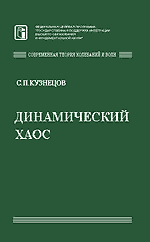 |
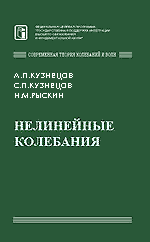 |
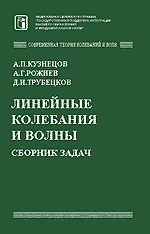 |
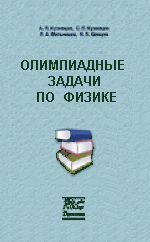 |
 |
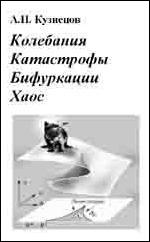 |
 |
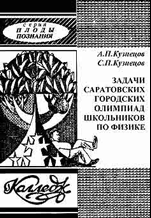 |
 |
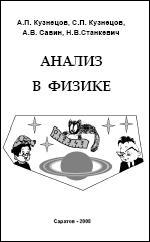 |
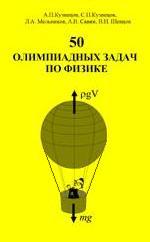 |
 |
|
|
Educational courses |
|
How do the physicists work and think. The four-year course is elaborated by A.P.Kuznetsov and S.P.Kuznetsov for Lyceum of College of Applied Sciences of SSU. The objective is to make high school students familiar as early as possible with a style of physical thinking and with concepts of nonlinearity, chaos, synergetics. Nonlinear oscillations. The course introduces key concepts and images of nonlinear dynamics, such as the nonlinear oscillator, self-oscillating systems, attractors, and gives a review of the basic ideas and methods of the nonlinear theory. The course is accompanied by seminars and computer practical lessons devoted to solving problems. Program. Catastrophe theory The course has a status of a corner stone for the whole educational program of the Department of Nonlinear Processes. The basic ideas of the catastrophe theory are introduced and used to develop such important concepts as typicty, codimension, universality, and to construct a "bridge" towards more complex questions of the bifurcation and chaos theory. Problems for seminars are elaborated for all 12 basic topics of the course. Computer practical lessons are aimed to investigation of the basic catastrophes and their applications. Program. Dynamical systems and bifurcations The course is devoted to consideration of a wide spectrum of properties of dynamical systems. Classification and analysis of bifurcations is developed in a spirit of the Poincare strategy, that is a consideration of the phenomena in the order of an increasing codimension. Differential equations and iterative mappings are discussed in parallel, and special attention is turned to the problem of correspondence between these two approaches to description of dynamics. The course is complemented with seminars and computer practical lessons "Simulation of dynamical systems and bifurcations". Some of the problems are formulated on a basis of researches performed in Saratov Division of IRE of RAS. Program. Dynamical chaos The course contains a review of chaotic dynamics in artificial systems (e.g. saw-tooth map, tent map, Baker’s map, Arnold’s cat map etc.) and in realistic systems (Lorenz model, Rössler model, generators of Kijashko-Pikovsky-Rabinovich, Anishchenko-Astakhov, Dmitriev-Kislov, Chua). Such fundamental concepts as Smale horseshoe, homoclinic structure, invariant measure, mixing, instability, Lyapunov exponents, strange attractors and their fractal properties are explained in details on physical level. The computer practical lessons are presented. Program. From order to chaos The course is devoted to the problem of scenarios of transition to chaos. The basic known scenarios - via period-doubling cascade, intermittency and quasiperiodicity are considered in details including the renormalization group analysis, quantitative universality and scaling. The computer practical lessons are devoted to problems of research character. Program. Fractals and complex analytic dynamics The course is elaborated by O.B. Isaeva. It contains a review of examples and properties of fractals, both "toys" and serious physical applications. Phenomena of complex analytic dynamics are discussed including effect beautiful illustrations and original physical examples. Program (in Russian). |
|
|
Educational Courses in Pictures |
|
Equations of dynamical systems often contain parameters, the constant quantities determining character of observing regimes. In the case of two control parameters there exists a useful visual representation of the system behavior by means of charts of dynamical regimes - diagrams on the parameter plane where domains of qualitatively distinct regimes are indicated by colors. |
|
|
Page of High School Student |
|
In this section we present problems in physics for students of high school. You can send your solutions to Alexey Savin, and then your work will be checked and you will receive a mark or a referee report. |